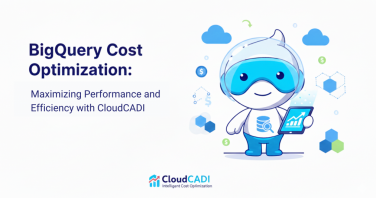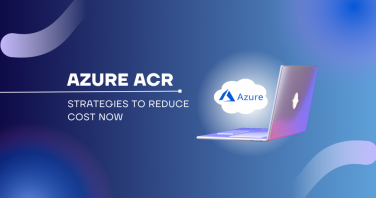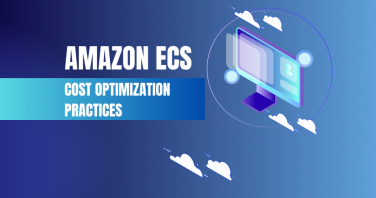Enterprises using public cloud assets need a well-thought public cloud tagging of assets, an inventory model to achieve the highest level of visibility, and utilization, thereby robust mechanisms to ensure minimal wastage. It is vital for all organizations at scale.
“The wider the cloud adoption, the more complex is the cloud cost management”
According to NASSCOM, enterprises are expected to increase their cloud budget by nearly 5-15% CAGR till FY 2025. Selection, allocation, tracking, and monitoring of the cloud resources that seem simple and manual during the initial cloud adoption stages will turn into a headache when cloud assets number multiplied by hundreds.
The Cloud infrastructure management team can make use of “Tagging” and bucket the resources under a tag defining their function in the cloud. Any cloud practitioner can easily call, filter, and organize the resources using their tags.
Even the leading cloud service providers, Microsoft, AWS, and GCP emphasize tagging as the best practice to effectively sort and ally FinOps. We covered the benefits of FinOps in our previous article. Let’s see in this article,
- What is Cloud Tagging?
- Benefits of Cloud Tagging
- Cloud Tagging best practices
- Cloud CADI & Cloud Tagging
What is Cloud Tagging?
Cloud tagging is the practice of assigning custom names to cloud resources. Its nomenclature varies from organization to organization based on their teams’ preferences and ease.
Cloud tag comprises two – Key and Value. Key conveys the categories (ex: Environment, Owner) and Value conveys the meta description (ex: Testing, Priya)
Example: Environment: Testing
Key – Environment
Value- Testing
Key and Value can be case-sensitive or insensitive based on the service provider. For example, In AWS, both keys and values are case-sensitive whereas, in Azure, keys are case-insensitive, and values are case-sensitive.
What are the benefits of Cloud Tagging?
Structured resource allocation:
Enterprises opt for the multi-cloud environment for improved efficiency. Cloud resources procured from different vendors when contributing to a common project can be tagged under one label. In this way, no cloud resources are left unused.
Streamlined governance:
Cloud tagging introduces organized cloud resource management in the organization. The Cloud infrastructure management personnel tend to lose control of the track of assets while handling multiple workloads deployed in multiple projects. Cloud tagging helps LOB Managers, CIOs, CTOs, and CFOs easily associate and understand resources with their business value, usage frequency, time of operation, and cost.
Team-specific reports generation:
It is crucial to identify which team involves which resource to optimize the cloud utilization. Cloud tagging helps to drill down the cloud usage specific to business units. Reports help the engineering team to assess and alter workloads. This further helps the finance team to understand which team consumes more cloud budget and frame solutions along with the other teams to curb the bills.
Aid automation:
Automation in the cloud relieves the burden of the cloud team in handling repetitive tasks. In an agile environment, businesses should be able to scale down or up the storage bandwidth, CPU utilization, or change configurations quickly as the demand rises.
Tags allies in automating the actions like sending notifications to cloud engineers on resources that are idle for a given period; automating the storage for a specific environment(testing); automatic decommissioning or provisioning of bulk resources.
Resource access management:
Security is still a debating factor in the cloud. Tag-based access control can alleviate data breaches and ensure the confidentiality of sensitive data transacted over the cloud. For example, we can actively allow the developing team to access only the resource with the tag, environment: dev (user-defined tag).
Traceback the roots:
CTOs and CIOs report, that finding the source for cloud spending is a daunting task in cloud infrastructure management according to Economic Times. Tagging helps to find the specific team or resource that is critical and runs for a longer duration eating most of the infrastructure budget. Once it is identified, restructuring, or rebuilding the workload brings down the unintended cloud expenditures.
Cloud Tagging Checklist

Even though cloud tagging policies vary from business to business, it’s important to make them standard and globalized across the enterprise. So that it makes sense to every team handling cloud. Defining the rules for cloud tagging during the deployment itself mitigates anomalies in the future.
It’s confidential! – Never include sensitive data to be in the tags.
Why do you need it? – Defining the tagging needs brings better resolution in meta-describing the resources. Stakeholders responsible handling, maintaining, tracking, and improving the tags should collectively define the use cases and name tags accordingly.
Make it speak for itself – Ensure that the naming convention carries all required information like a business unit, region, unique resource identifier, criticality, etc. enough to help the business team, engineering team, and CXOs in locating, and tracking, and cost optimizing the workloads.
Consistency is the Key– Once the tag schema is developed, it is important to stick to it. The person handling the tags should be cautious while defining, improving and update the same in the rules.
Example: Env: nztesting01 is different from Env: testingnz01
Minimum suggested tags– Cloud giants like Azure, GCP, and AWS recommend below as the minimum suggested tags to include for an effective tagging process,
- workload name
- Data classification
- Operations commitment
- Operations team
- Cost center
- Cluster
- Version
- App id
- Disaster recovery
- Service class
- Start date of a project
- Owner name
- Business unit
Tag naming limits – Have a watch on the character limits before naming your resources. Key-Value character limits vary based on the CSP you choose. For example, the Key character limit is 1-63 with UTF-8 encoding for GCP whereas, it is 1-128 for AWS resources. Key and values should contain only lowercase letters, numeric characters, underscores, and dashes in GCP. Tag keys and values are case-sensitive in AWS.
Related reading: AWS cloud tagging best practices
CloudCADI & Cloud Tagging
CloudCADI is a one-stop solution for all your FinOps shortfalls. It pulls off all your hidden cloud resources bundling up your cloud bills without any productive output. This financial visibility in the organization makes the employees feel accountable.
CloudCADI makes use of cloud tags to enhance your cloud experience in one go.
Our Recommendations:
1. Cloud practitioners name resources before deploying them into the services or app or any other function. We suggest our clients include at least five fields in their naming convention for easy identification and filtering.
Example,

2. Adding multiple tags to one resource leads to multiple filters to fetch the exact resource utilization and cost data.
Examples,
Owner: Priya (person responsible for the resource)
Platform id: AZR
Region: AU (Australia)
Zone: E (East)
Our flagship product gives you comprehensive reports on the unused, under-utilized, and over-provisioned resources using tags

Tag-based reports are detailed and specific. CloudCADI gives a simple virtual representation for a quicker overview. It allows you to further filter out and point out any resource contributing to the cloud waste.
We can implement custom automation scripts to automate the scale-up, shut down, or any repetitive cloud tasks saving manual labor.
We don’t stop right there. CloudCADI gives “intelligent recommendations” with which you can immediately realize the benefits. Our actionable insights facilitate you with the best alternatives along with the cost savings report to decide immediately.
Start leveraging now. SPEND RIGHT on cloud.


























